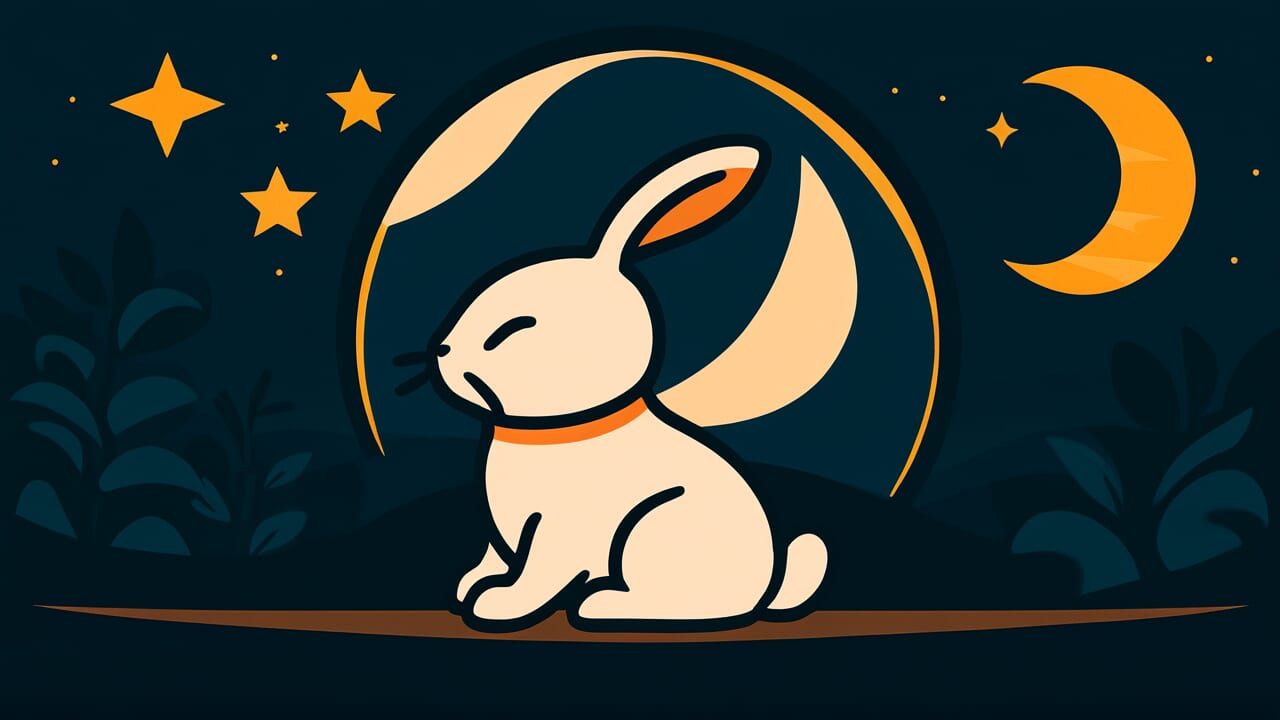How to Read “A rabbit of many years”
Nenkō no usagi
Meaning of “A rabbit of many years”
“A rabbit of many years” refers to a rabbit that has survived for many years and become cunning. This proverb describes a person or situation that is not easy to deal with.
People use this saying when facing an experienced and crafty opponent. Someone may appear calm on the surface, but actually possesses various strategies and won’t be easily controlled.
The phrase means more than just “a difficult opponent.” It implies wisdom and tactics gained through years of experience.
This expression fits perfectly when you encounter a surprisingly tough opponent. Examples include business negotiators or elderly people with rich life experience.
You might say, “That person is a rabbit of many years, so I can’t let my guard down.” Even today, this phrase effectively expresses the difficulty of dealing with highly experienced people.
Origin and Etymology
No clear written records explain the origin of this proverb. However, we can make interesting observations from how the words are constructed.
“Nenkō” means a long period of time. It uses the Buddhist term “kō,” which represents an incredibly long unit of time.
The choice of this word adds deep meaning to the proverb.
Why a rabbit? Rabbits are naturally timid, cautious, and quick animals. For such a rabbit to survive many years is no ordinary feat.
To escape predators and survive harsh natural conditions requires more than just speed. The rabbit needs cunning and wisdom.
A rabbit with years of experience is no longer a simple animal. It becomes an opponent that even humans find troublesome.
The wisdom and tactics learned for survival eventually get recognized as “cunning.”
This expression contains both wariness and a certain respect for experienced individuals. The phrase captures the meaning of an elusive, formidable presence that cannot be easily caught or underestimated.
Interesting Facts
Japanese folktales and legends often portray rabbits as wise creatures. In “The White Rabbit of Inaba,” a rabbit uses cleverness to trick crocodiles.
In “Kachi-kachi Mountain,” a rabbit confronts a cunning tanuki. This cultural background of rabbits as intelligent, strategic beings likely influenced the creation of this proverb.
Wild rabbits actually live only a few years. However, this proverb uses the Buddhist term “nenkō” to create an unrealistic setting of surviving beyond normal lifespans.
This exaggeration makes the opponent’s toughness more impressive and memorable.
Usage Examples
- That negotiation partner is a rabbit of many years, so they won’t accept our proposal easily
- She looks young but has 30 years in the industry—a rabbit of many years that a newcomer like me can’t match
Universal Wisdom
“A rabbit of many years” teaches us a universal truth: experience changes people. Why do people become “cunning” as they gain experience? Because it was necessary for survival.
Life isn’t always smooth sailing. Through facing difficulties, betrayals, and repeated failures, people naturally sharpen their defensive instincts.
Someone who started out pure and honest becomes more cautious and learns strategies with each painful experience. This isn’t necessarily bad—it may be a necessary evolution as a survival strategy.
What makes this proverb interesting is that it doesn’t simply call experienced people “wise.” It calls them “cunning.”
This reveals complex emotions toward those who have lost their innocence. It mixes respect, wariness, and a touch of sadness.
We all have the potential to become “a rabbit of many years” over time. Experience can be a weapon, but it can also become armor that closes our hearts.
Our ancestors expressed the meaning of living long through this small rabbit image. This proverb quietly questions both the value of gaining experience and the dangers hidden within it.
When AI Hears This
Rabbits can theoretically produce up to 84 offspring in one year. With four litters averaging six babies each, that’s 24 offspring—potentially three times more under ideal conditions.
This represents a classic “r-strategy” in ecology, where species with low individual survival rates compete through numbers. “A rabbit of many years” isn’t just a metaphor—it states a probabilistic truth.
Interestingly, this proverb implicitly performs “expected value calculation.” Wild rabbit kits have only about 15 percent survival rates.
Of 24 babies born, only 3-4 reach adulthood. Yet repeated annually over ten years, this produces 30-40 descendants.
Large animals producing only 1-2 offspring per birth face irreversible loss if their young die. This “K-strategy” focuses on raising fewer offspring with greater certainty.
Before learning scientific probability theory, humans observed rabbit reproduction patterns and intuitively understood the basic statistical principle: “increasing trial numbers raises success probability.”
This proverb doesn’t just encourage trying repeatedly without fearing failure. It suggests a biologically correct strategy. The fact that r-strategy organisms have actually survived proves this wisdom’s validity.
Lessons for Today
This proverb teaches modern people not to judge others by appearance or first impressions alone. When facing experienced people, you must respect the years of wisdom and strategy behind them.
In business and relationships, thinking “I can easily persuade them” or “They’ll understand right away” is dangerous.
If your opponent has years of experience, they’ve probably encountered your approach many times already. Instead, acknowledge their depth of experience and maintain a humble learning attitude.
This proverb also suggests something about our own growth. You too can become “a rabbit of many years” through experience.
This doesn’t mean simply aging. It means learning from each experience and accumulating your own wisdom.
Don’t underestimate others’ experience, and carefully nurture your own. This balance is the practical wisdom this proverb offers to those of us living today.



Comments